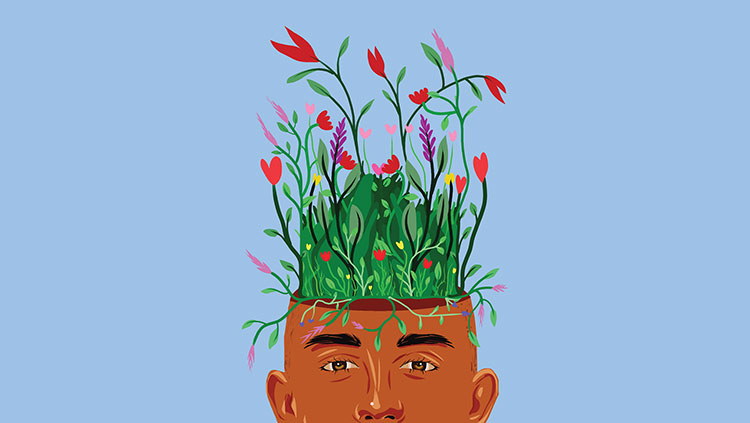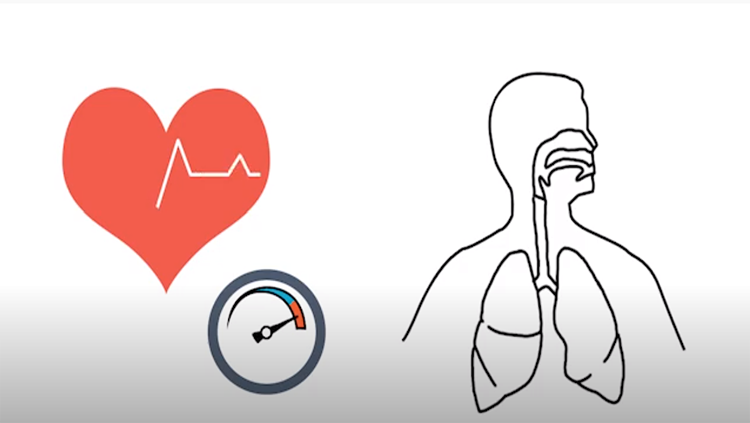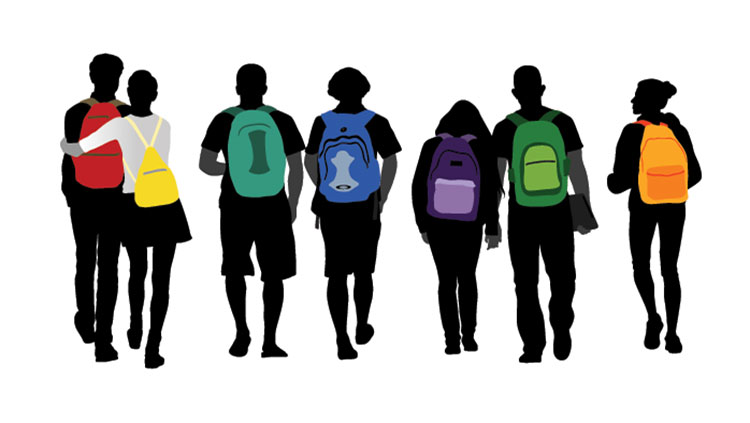
Adolescence is a time of striking change in the brain as well as the body. Environment and experiences during this time guide development of some of the human brain’s more complex functions, making the teen years a second critical period of brain development.
The teen brain is like a big ball of clay, ready to be molded by new experiences. Neurons extend their dendritic branches to receive signals from other neurons, and their axons add more insulating myelin to speed signal transmission, especially in the brain’s frontal lobes. At the same time, extensive synaptic pruning culls weaker pathways in a process called competitive elimination. Together, these changes reshape the neural highways that move signals through the brain.
These changes give the teen brain an amazing capacity to learn. Magnetic resonance imaging (MRI) scans of the adolescent brain show that white matter — brain tissue containing heavily myelinated nerve fibers — increases. The increase is especially pronounced in the corpus callosum, the large bundle of myelinated fibers connecting the brain’s right and left hemispheres. Stronger connections between the two sides may explain teens’ enhanced learning capacity.
Enhanced connectivity and an imbalance between the parts of the brain responsible for decision-making and self-control and those involved in motivation and emotion may lead teens to seek new experiences. This makes teens more likely to take risks and seek excitement.
Unfortunately, this can be a double-edged sword: Risk taking and sensation seeking can lead many teens to experiment with drugs and alcohol, increasing the chances of addiction. The brain regions involved in addiction overlap with those supporting learning, memory, and reasoning, prompting some scientists to regard addiction as a type of acquired learning disorder.
Frequent drug use during the teen years damages parts of the brain important for memory, attention, and executive functioning. Teens who drink alcohol possess less gray matter — areas densely packed with neuron cell bodies — and their white matter is also less robust, suggesting their cells may not communicate as well. Studies using functional MRI (fMRI) indicate adolescents who binge-drink have lower brain activity and a harder time sustaining attention compared to their peers who don’t drink. They also perform more poorly on tests measuring working memory, the ability to hold small pieces of information in mind for a short time.
The human brain continues to develop and change even beyond the teen years. Some studies show ongoing changes until about 30 years of age. Different brain regions show different rates of growth and maturation. For example, MRI studies indicate the gray matter density of most brain regions declines with age. But in the left temporal lobe, a region important for memory and language, it increases until age 30. Other changes affect the myelin that protects axons and speeds signaling between cells. Younger brains have more myelin in regions processing visual and auditory information and motivation and emotion. Closer to 30, the frontal and parietal lobes develop more myelin, which aids working memory and higher cognitive functions.
The frontal lobes are the last regions of the brain to fully develop. These regions are important for executive functioning — complex functions like attention, self-control, decision-making, and long-range planning. The late maturation of the frontal lobe might explain some of the characteristics of a “typical teenager,” such as a short attention span, impulsive behavior, and forgetting to do homework. However, none of this means that the teenage brain is broken. It is simply experiencing a critical period of development that also opens the brain to millions of new learning opportunities.
Adapted from the 8th edition of Brain Facts by Melissa Galinato.
CONTENT PROVIDED BY
BrainFacts/SfN
References
Dekaban, A. S. (1978). Changes in brain weights during the span of human life: Relation of brain weights to body heights and body weights. Annals of Neurology, 4(4), 345–356. doi: 10.1002/ana.410040410
Fu, M., & Zuo, Y. (2011). Experience-dependent structural plasticity in the cortex. Trends in Neurosciences, 34(4), 177–187. doi: 10.1016/j.tins.2011.02.001
Giedd, J. N. (2008). The teen brain: Insights from neuroimaging. The Journal of Adolescent Health: Official Publication of the Society for Adolescent Medicine, 42(4), 335–343. doi: 10.1016/j.jadohealth.2008.01.007
Giedd, J. N. (2015). Adolescent neuroscience of addiction: A new era. Developmental Cognitive Neuroscience, 16, 192–193. doi: 10.1016/j.dcn.2015.11.002
Holland, D., Chang, L., Ernst, T. M., Curran, M., Buchthal, S. D., Alicata, D., … Dale, A. M. (2014). Structural growth trajectories and rates of change in the first 3 months of infant brain development. JAMA Neurology, 71(10), 1266–1274. doi: 10.1001/jamaneurol.2014.1638
Leigh, S. R. (2004). Brain growth, life history, and cognition in primate and human evolution. American Journal of Primatology, 62(3), 139–164. doi: 10.1002/ajp.20012
Lenroot, R. K., & Giedd, J. N. (2006). Brain development in children and adolescents: Insights from anatomical magnetic resonance imaging. Neuroscience and Biobehavioral Reviews, 30(6), 718–729. doi: 10.1016/j.neubiorev.2006.06.001
Luciana, M., & Ewing, S. W. F. (2015). Introduction to the special issue: Substance use and the adolescent brain: Developmental impacts, interventions, and longitudinal outcomes. Developmental Cognitive Neuroscience, 16, 1–4. doi: 10.1016/j.dcn.2015.10.005
Shankle, W. R., Rafii, M. S., Landing, B. H., & Fallon, J. H. (1999). Approximate doubling of numbers of neurons in postnatal human cerebral cortex and in 35 specific cytoarchitectural areas from birth to 72 months. Pediatric and Developmental Pathology : The Official Journal of the Society for Pediatric Pathology and the Paediatric Pathology Society, 2(3), 244–259. doi: 10.1007/s100249900120
Sowell, E. R., Peterson, B. S., Thompson, P. M., Welcome, S. E., Henkenius, A. L., & Toga, A. W. (2003). Mapping cortical change across the human life span. Nature Neuroscience, 6(3), 309–315. doi: 10.1038/nn1008
Squeglia, L. M., Schweinsburg, A. D., Pulido, C., & Tapert, S. F. (2011). Adolescent Binge Drinking Linked to Abnormal Spatial Working Memory Brain Activation: Differential Gender Effects. Alcoholism, Clinical and Experimental Research, 35(10), 1831–1841. doi: 10.1111/j.1530-0277.2011.01527.x
What to Read Next
Also In Childhood & Adolescence
Trending
Popular articles on BrainFacts.org



















